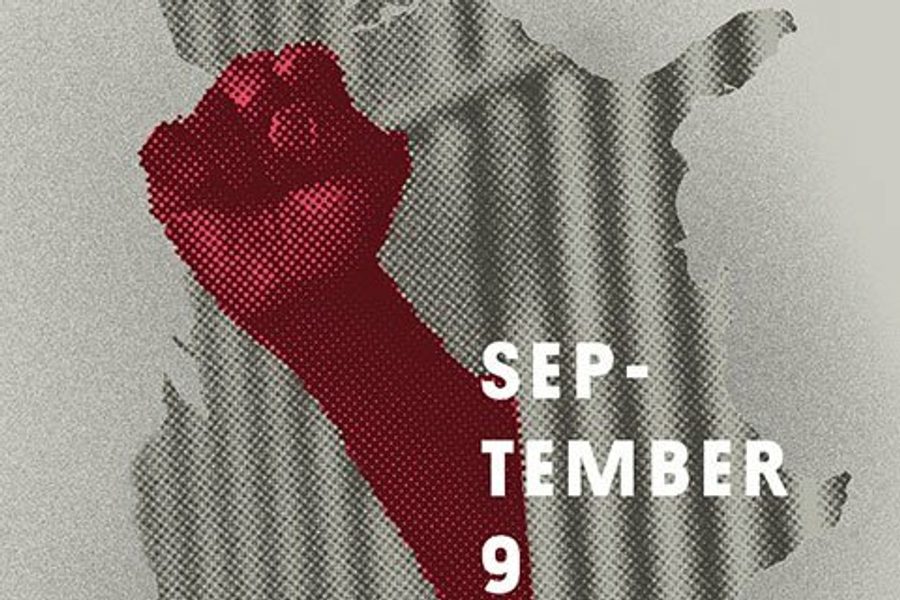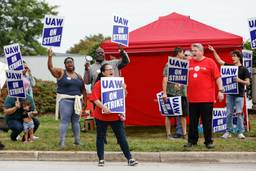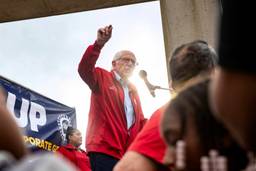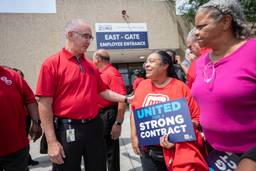45 Years After Attica, Prisoners Are Organizing What Could Be the Biggest Prison Strike Ever
Anna Simonton

Forty-five years after the bloodiest prison riot in the United States, incarcerated people across the country plan to commemorate the Attica rebellion and peacefully protest prison conditions by bringing the multibillion-dollar prison economy to a grinding halt, in what may turn out to be one of the biggest prison strikes this nation has ever seen.
According to strike leaders, inmates from 40 prisons in 24 states have signed on to the plan. That information is not easily verifiable because those leaders are behind bars.
Using cell phones, Robert Earl Council Jr. (also known as Kinetik Justice), Melvin Ray and James Pleasant — all inmates in solitary confinement in Alabama — have coordinated what they’re calling a National Day of Solidarity to End Prison Slavery. They say that on September 9, thousands of prisoners across the country will refuse to work. The duration of the strike may vary from prison to prison, but strike leaders in Alabama say they are prepared to maintain the protest until their demands for better working and living conditions – – along with legal reforms – – are met.
The 1971 uprising at Attica Correctional Facility in New York was based on similar demands. After several tense days of negotiations, during which prisoners held guards and staff hostage, state police violently stormed the prison. In the end, 43 people died. The episode led to significant reforms within New York’s prison system, and remains a hallowed example of prisoner organizing, despite the horrific losses incurred.
Council said that prisoners who strike on September 9 will be peaceful.
Council, Ray, and Pleasant make up the core of the Free Alabama Movement (FAM), a network of prisoners spanning numerous facilities. FAM has periodically used strikes and other acts of civil disobedience to challenge the conditions of Alabama’s prisons.
“The Free Alabama Movement started from an internal law class,” Council told In These Times during a phone interview from a solitary cell within the Holman Correctional Facility in Atmore, Alabama. He said that the class for jailhouse lawyers, which he joined back in 2000, gradually became a space for political education. When inmates shut down six Georgia prisons in 2010, Council said “we started evaluating our environment and seeing how things is working. The labor aspect is what keep these places going and that’s the only thing we have control of. We began organizing around that.”
He and Ray co-authored a manifesto called “Let The Crops Rot In The Fields” that FAM has used as an organizing tool to educate and mobilize other prisoners around labor issues. The Industrial Workers of the World, which joined forces with FAM after a prison strike in 2014, has helped by mailing the pamphlet to prisoners in other states.
Council was moved to solitary confinement for his role in organizing the 2014 strike and has remained there ever since. He is serving a life sentence for murder.
In Alabama, prisoners manufacture a panoply of products including furniture, license plates and chemical cleaning agents. They perform services such as millwork, construction and vehicle restoration. Alabama prisoners also supply much of the labor that keeps the prisons running – – cooking the food, doing the laundry and cleaning the facilities.
Bob Horton, an Alabama Department of Corrections (ADOC) spokesman, did not respond when asked how much revenue is made from selling prisoner-generated products and services. Nor did he respond to a question concerning the role of for-profit companies in Alabama’s prison economy. Many corporations, including Microsoft, Victoria’s Secret, Starbucks and Wal-Mart have profited from prison labor.
“The criminal justice system, it is all a continuation of slavery. This is what needs to be addressed right now,” Council said. “On a national level, the core demand is to put an end to slavery once and for all.”
To that end, FAM and its partners across the country are calling for a revision to the 13th Amendment, which abolished slavery and involuntary servitude, “except as a punishment for crime whereof the party shall have been duly convicted.” Council said that the Constitution should not have language that justifies slavery under any circumstances.
Donald Tibbs, an associate professor of law at Drexel University and author of a book about prison labor organizing, echoed Council’s interpretation.
“The 13th Amendment wasn’t designed to end the vestiges of slavery,” he said. “It left a clause in the statute. Anytime you see ‘unless’ in a Constitutional amendment, you have to open your eyes and pay attention,” said Tibbs.
He noted that the 13th Amendment was used to justify convict leasing programs that largely used black prisoners, many of them former slaves, to rebuild the nation after the Civil War. Southern states also passed “Black Codes” – – laws that were supposedly race-neutral but were disproportionately applied to black people in order to “recapture their labor,” according to Tibbs.
FAM’s state-specific demands center on the links between mass incarceration, overcrowding and the hellish conditions in Alabama’s prisons, which currently hold twice as many people as they are designed for. On its website, FAM has reported on sewage spewing from walls, fatally ineffective medical care, insufficient meals (like a few scoops of beans and two cupcakes) and pervasive violence (guards allegedly punish prisoners with “testicle stomping”) that FAM chalks up to a “shortage of staff and surplus of prisoners,” which leads correctional officers to, “being over aggressive in order to emphasize their control.”
Prisoners have lashed out before in response to deteriorating conditions. In March, inmates at Holman took over parts of the prison, set fires and stabbed the warden. Council said that when tensions flare up, FAM is able to channel prisoners’ frustrations into an organized response. The March riots were followed by a 10-day work stoppage in May, which set the stage for the national strike.
Alabama Gov. Robert Bentley has proposed to address the overcrowding by allocating $800 million dollars to building new prisons. So far, his proposal hasn’t made it through the legislature. FAM has outlined an alternative plan in 25-pages of legislation it calls the Freedom Bill, which is packed with reforms that would result in fewer people being incarcerated in the first place. It also includes plans to release low-level offenders, create more opportunities for parole and implement rehabilitation and reentry programs.
Reforms to sentencing laws could certainly chip away at mass incarceration in Alabama. The Alabama Public Safety and Sentencing Coalition reported that because of the state’s Habitual Felony Offender Act (a three-strikes law), nearly half of the state’s prisoners are facing long sentences for nonviolent offenses. FAM also takes issue with a law allowing Alabama judges to apply life without parole, even to first time offenders, and claims that the state parole board moves at a snail’s pace, making decisions through a convoluted process that FAM calls “arbitrary.”
FAM’s demands come at a pivotal time; state legislators have expressed fear of a federal takeover to bring the prison system into capacity compliance. With Bentley’s prison construction proposal at an impasse, measures like those in the Freedom Bill present a way forward. But lawmakers are generally disinclined to take direction from incarcerated people. That’s where supporters on the outside can play a role.
Advocates are also gearing up for the September 9 strike. The Ordinary People Society (TOPS), an Alabama-based organization founded by a formerly incarcerated minister, is mobilizing religious leaders and community members to take action. TOPS has been instrumental in winning legislative victories on behalf of incarcerated people in several southern states. And a group called Mothers And Families is organizing people impacted by mass incarceration in Alabama and Georgia to demonstrate at the prisons where inmates are on strike.
“We are going to change the political process through the economic process,” Council concluded. “If the people inside these prisons just sat down to write letters and read books, they would fold these prisons.”

I hope you found this article important. Before you leave, I want to ask you to consider supporting our work with a donation. In These Times needs readers like you to help sustain our mission. We don’t depend on—or want—corporate advertising or deep-pocketed billionaires to fund our journalism. We’re supported by you, the reader, so we can focus on covering the issues that matter most to the progressive movement without fear or compromise.
Our work isn’t hidden behind a paywall because of people like you who support our journalism. We want to keep it that way. If you value the work we do and the movements we cover, please consider donating to In These Times.



